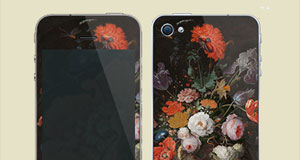Self-portrait in a Flat Cap, Rembrandt van Rijn, c. 1642
etching, h 93mm × w 62mm More details
In his early self-portraits, Rembrandt often practises rendering light or emotions. By contrast, these later ones are more narrative, because he dresses up in imaginary costumes (e.g. complete with an Oriental sword) or in 16th-century attire. With the latter variant, he aligns himself with celebrated 16th-century artists, such as Lucas van Leyden, Titian or Raphael.


